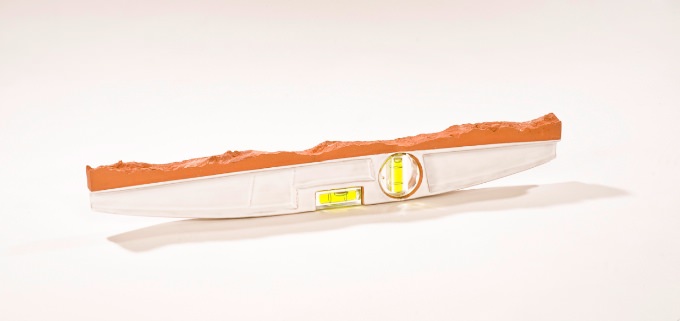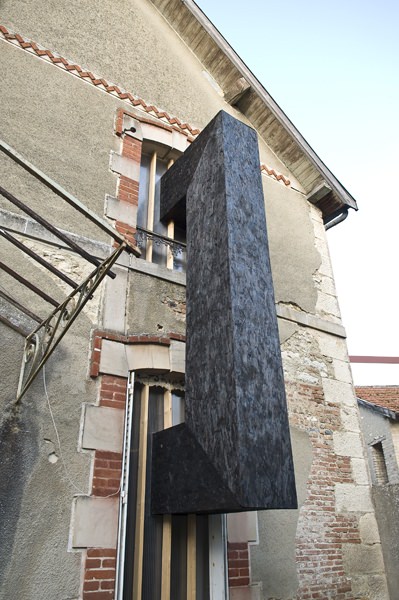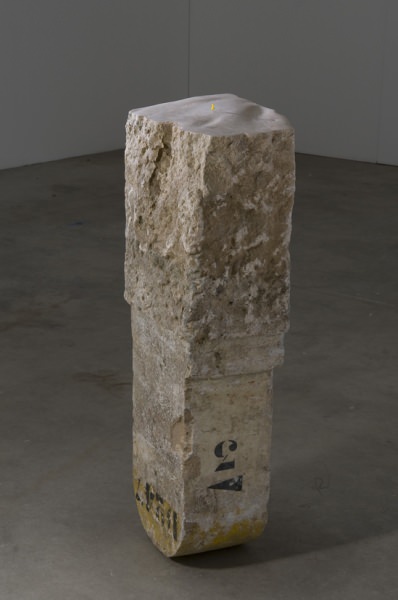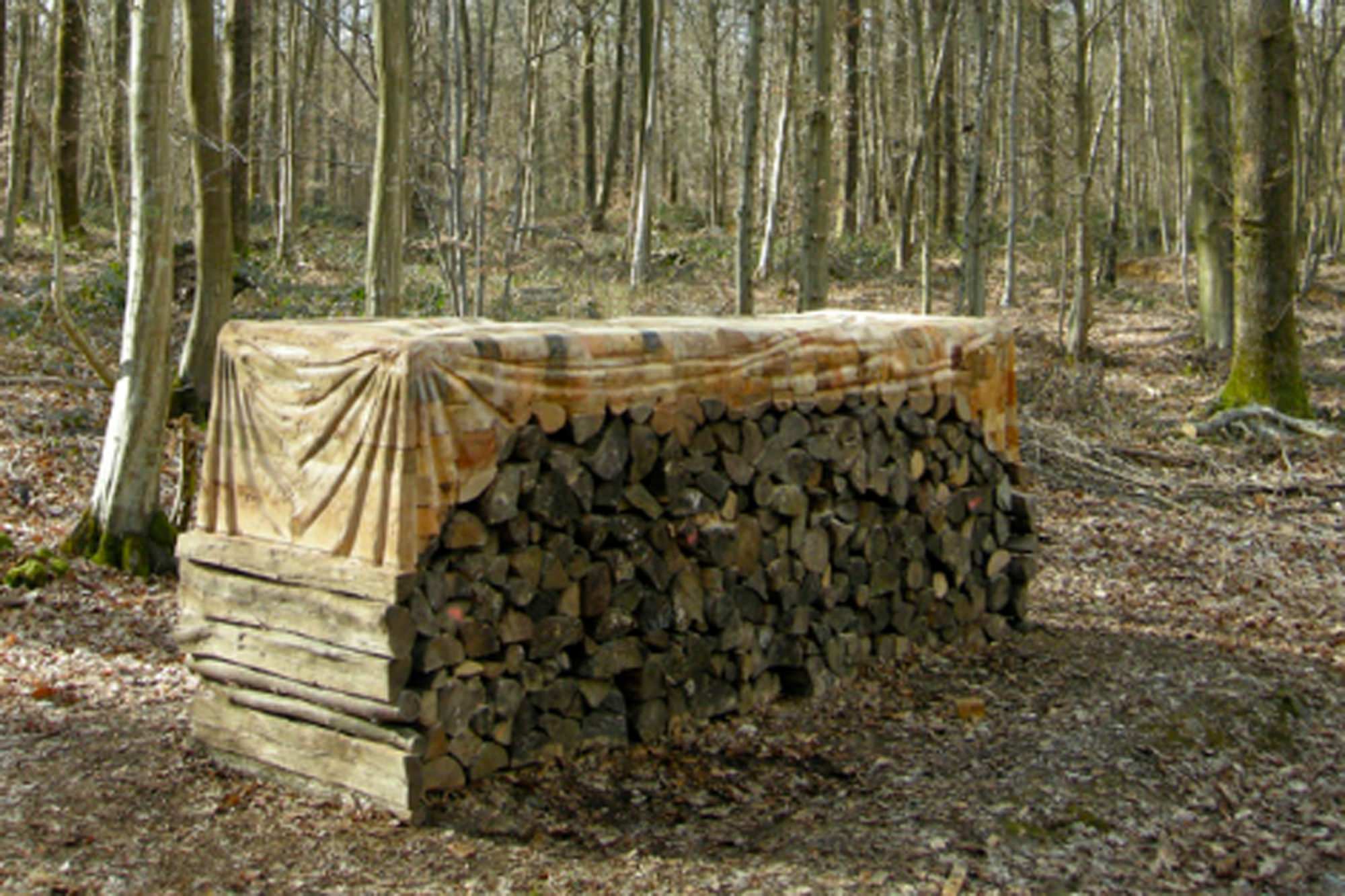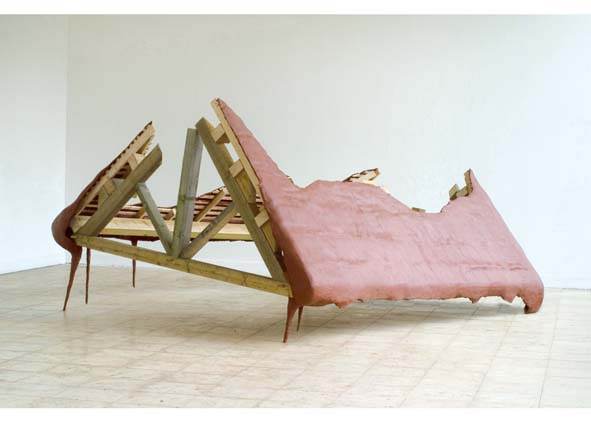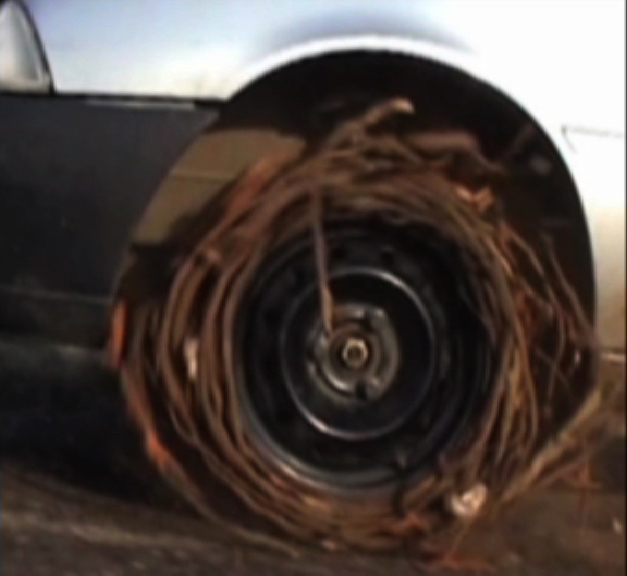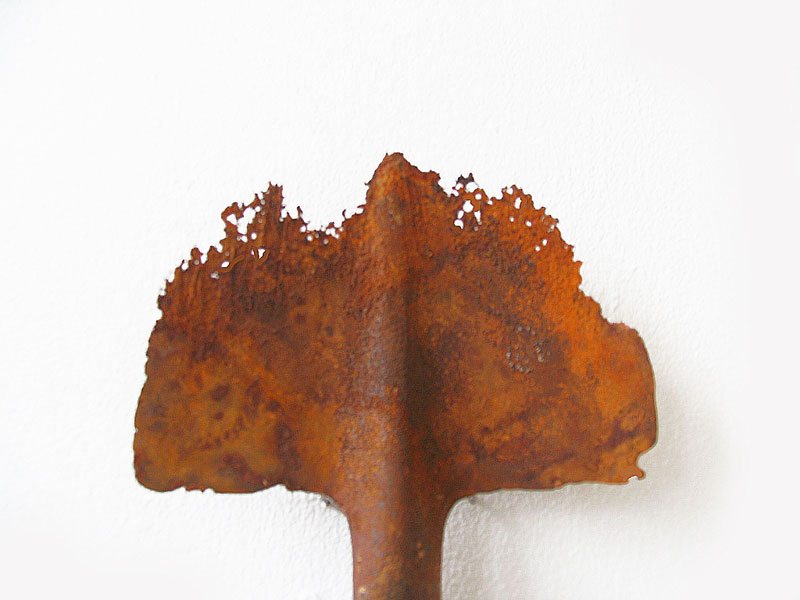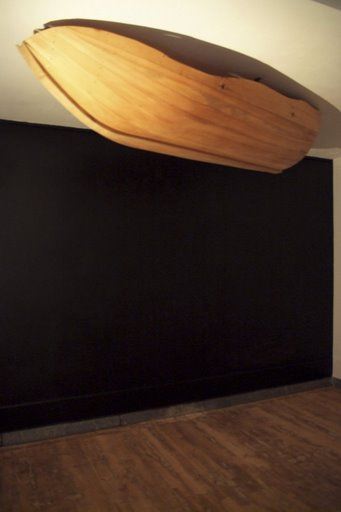Ground Level
Ground Level (2010)
multiple de 50 exemplaires numérotés et signés, céramique émaillée, dimensions : 40 x 1 x 5, produit par les amis du FRAC Champagne-Ardenne, collection FRAC Champagne-Ardenne
“Ground level“ est un niveau à bulle qui intègre le relief du sol sur lequel il a été posé. Son empreinte reproduit en négatif sur l’objet, évoque un paysage accidenté en miniature. L’objet paradoxal qui résulte de ce processus de transfert, est unique pour chaque exemplaire. Il ne permet pas d’indiquer qu’une surface est horizontale ou verticale, mais exprime dans toutes les positions sa constante instabilité. Incapable de mesurer le monde physique, il en devient lui-même une métaphore.
~
50 models signed and numbered glazed ceramic, 40 x 1 x 5, produced by les amis du FRAC Champagne-Ardenne, collection FRAC Champagne-Ardenne
Ground level is a bubble level made in ceramic that integrates the relief of the ground on which it was put down. Reproduced in negative print on the objet evokes a rugged landscape in miniature. The paradoxical objet is unique for each model. It does not indicate that a surface is horizontal or vertical but in all positions expresses its constant instability. Unable to measure the physical world, it becomes its metaphor.
